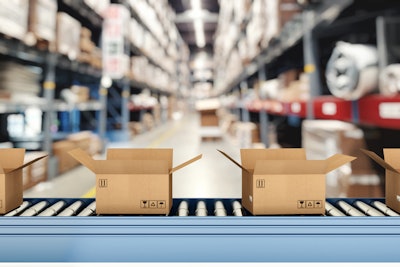
While the initial disruption of the Coronavirus disease (COVID-19) pandemic – from port closures to complete production shutdowns – may be winding down in many regions, we’re only just beginning to understand its long-tail effects on global commerce, supply chains and procurement.
The entire world has been through a period of intense economic disruption, and it’s showing. Inflation rates across multiple key product categories and commodities have hit a 30-year high. Ongoing shipping and truck shortages triggered by a surge of demand when companies re-commenced their operations are causing disruption on top of disruption. And, region-specific disruptions – from bad weather and low crop yields to major geopolitical instability – are causing teams to question just how robust their supplier portfolios really are.
The word unprecedented has been thrown around a lot during this time, but for good reason. There isn’t a clear parallel for these challenges in recent memory, leaving many consumer packaged goods (CPG) procurement teams asking the same question -- what can we do about all of this?
Unfortunately, with each business feeling the impacts of those challenges in different ways, there is no single right answer to that question. In addition to standard hedging practices applied for cost avoidance and managing price risk, there are a number of procurement-led strategies teams can apply and act on in their own way to help alleviate some of the pressure and better prepare for what the future may hold.
Here are four strategies CPG teams should employ to help adapt to these challenging conditions, ensure consistent supply and control costs amidst this turbulent conflux of challenges.
1. Never stop forecasting, even when the future looks uncertain
Nobody could have predicted some of the extreme price surges seen across key commodities over the past couple of years. But, even in uncharted territory, it doesn’t mean we can’t learn about today’s conditions and proactively forecast for the future.
Many accepted truths about certain commodities have changed. And, the context of international commerce and trade has shifted significantly. So, when it comes to building up a predictive view of commodity trends, it’s no longer enough to simply rely on historical data and the expertise of your category managers.
If you want to understand what might be coming next across the categories you depend on, it’s worth exploring new data and insight-gathering opportunities, including:
● Working more closely with suppliers to understand the challenges they’re facing and the conditions they’re experiencing on the ground.
● Partnering with a specialist commodity intelligence provider that can help you contextualize data with third-party sources and purpose-built tools designed to deliver accurate forecasts and reliable future-facing insights.
● Monitoring categories and markets beyond the ones you’re directly invested in to identify adjacent trends before they start impacting the commodities you’re focused on.
It’s also important to look beyond procurement at this point too. Finance needs to be part of the conversation to accurately forecast what inflation may look like over the next couple of years and understand the wider economic context you’ll be operating in.
Click here to hear more about forecasting methods in the supply chain:
2. Work closely with pricing and product teams to mitigate the impacts of surging prices
When commodity prices start rising, great procurement teams kick into action fast, scouring supplier portfolios and available options to find alternatives that could help ensure a consistent supply of the goods they need at the right price. But, what do you do when strong alternatives aren’t available?
When a large proportion of global supply comes from the same country, and every supplier in that country is facing the same pressure, tweaking supply strategy isn’t always a viable strategy for negating the impacts of extremely inflated prices.
In situations like that, procurement needs to look beyond its own capabilities, and collaborate closely with product and pricing teams to do one or more of the following:
● Increase prices within acceptable consumer tolerance levels to mitigate higher ingredient costs.
● Adapt the sizes of products to cut overall costs per unit, without changing pricing.
● Temporarily pause promotions with vendors to sell at a higher cost.
● Alter sector levels across products to cut back on specific high-cost raw materials while they can’t be sourced at a suitable price.
3. Explore reshoring and nearshoring strategies to avoid region-specific supply chain disruptions
The COVID-19 pandemic has taught a lot of valuable lessons. The most prominent is that the cost advantages that can be gained through global sourcing strategies don’t come for free. The wider and more far-reaching your supply chain, the more exposed it is to risk and disruption.
Today, an increasing number of organizations are successfully leveraging reshoring and nearshoring strategies to help de-risk their supply chains and bring predictability and stability back to their operations.
While those strategies generally mean sourcing at a higher base cost – especially for western organizations – they can bring a much-needed level of consistency and peace of mind to sourcing strategies, giving teams a foundation they can rely on as they ramp up their post-pandemic operations.
4. Maintain a broad focus when facing very specific category challenges
When facing what looks like an insurmountable challenge, it’s very hard to look away from it. But, every minute spent looking at a single category for answers that may not be there is a minute that could have been spent finding cost-saving opportunities elsewhere.
CPG procurement teams must ensure that as they tackle these serious, ongoing supply chain and category challenges, they don’t lose sight of the big picture and maintain strong focus and visibility across every category they manage.
Part of that broader view involves revisiting supplier relationships and taking more of a collaborative approach to tackling price increases. For example, managing existing inventory, playing with minimum order quantity levels and rationalizing existing contracts are collaborative approaches that may result in a more strategic supplier relationship. In some cases, suppliers may give preferential treatment and absorb increased costs for the health of the long-term business relationship.
Commodity intelligence is a hugely valuable resource for procurement teams today. Not just because it can help them understand the underlying drivers behind their biggest challenges, but also because it can help continue to find lucrative opportunities to optimize their supplier portfolios and strategies in areas where teams may not think to look.
Looking forward, the most successful CPG procurement teams will be those that can effectively leverage commodity intelligence to find creative and value-adding solutions to major category challenges and maintain strong visibility and insight across every one of their categories, markets and suppliers.




















